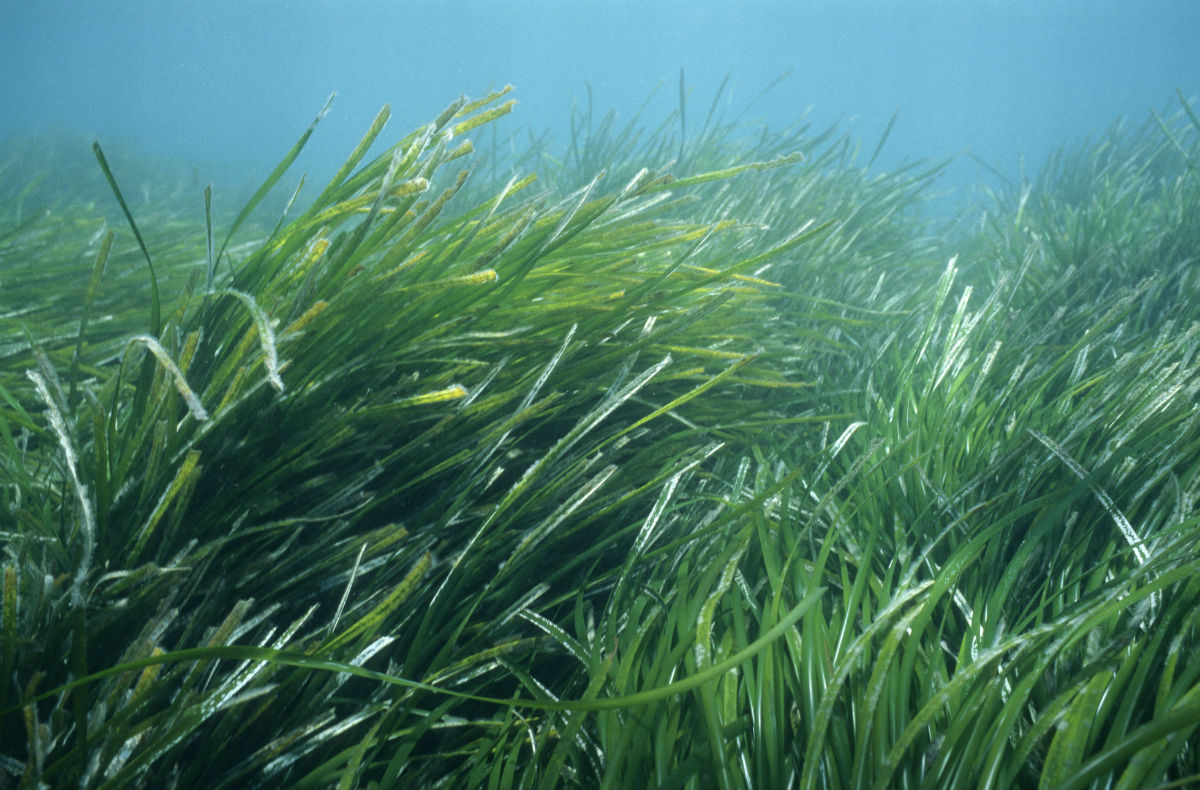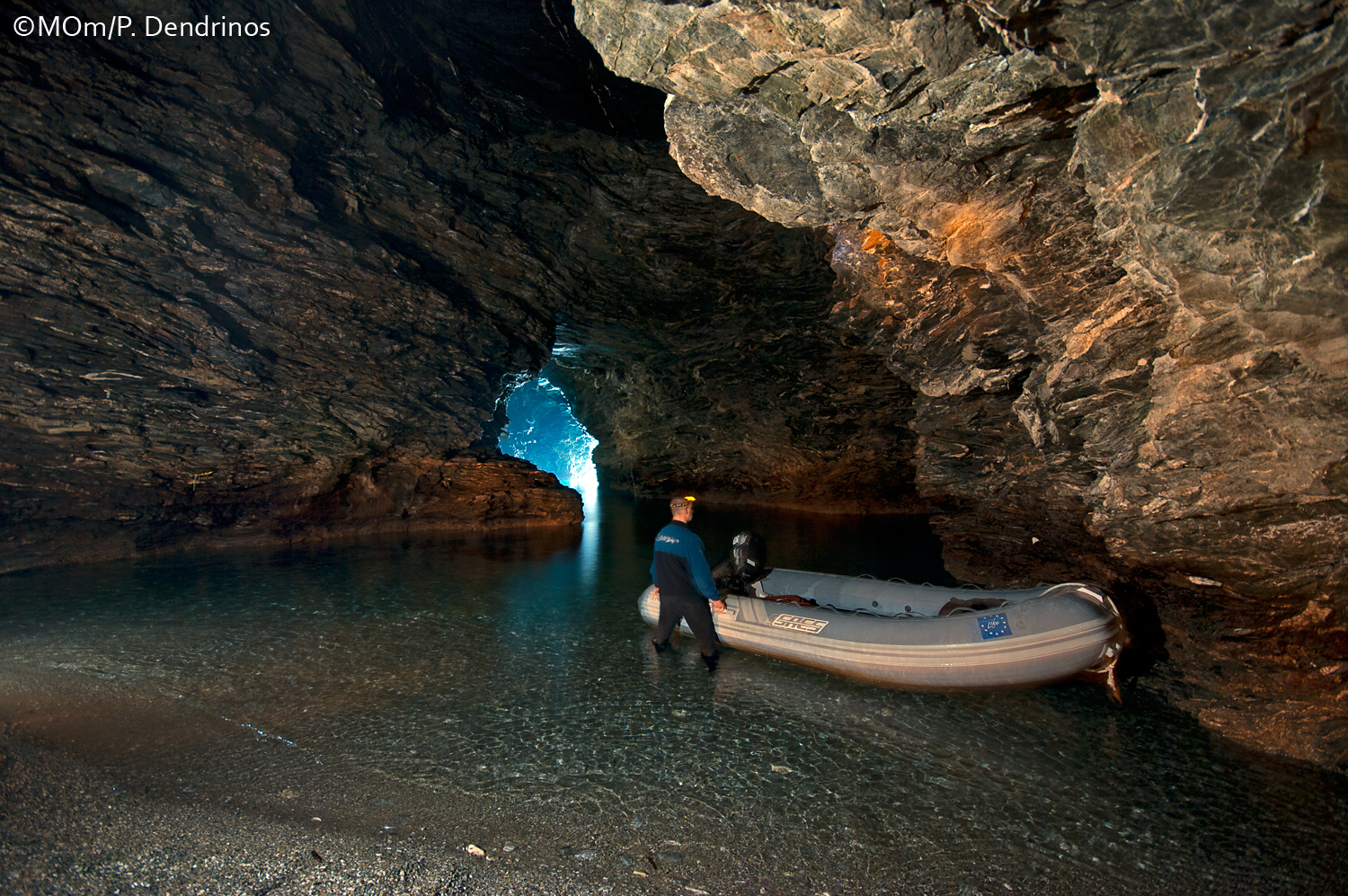Habitats
Posidonia Seagrass meadows the “lungs” of the sea.
The marine angiosperm Posidonia (Posidonia oceanica) is an endemic and emblematic species of the Mediterranean. In rich and healthy marine environment, the species creates dense and extensive green undersea meadows that are often called “sea lungs”. According to the Habitat’s Directive 92/43/EC, that foresees the creation of the European network of areas with special environmental management (Natura 2000) for conservation, Posidonia seabeds are a priority habitat.
© Michel Gunther/WWF-Canon
They are invaluable for the marine environment! It is a unique marine ecosystem with productivity that equals the productivity of the Amazon forests and coastal wetlands. It holds high quantities of CO2, enriches the sea water and the atmosphere with oxygen, provides shelter for many marine organisms, including many commercial species and protects the seabed and the coasts from erosion.
Posidonia meadows have very slow growth rates, they inch only few centimeters per year and according to experts they are thousands if not hundreds of thousands of years old! They can be found in shallow waters and in conditions of extreme clearness, even deeper than 40 meters of depth.
Tragana, the fragile coralligenous formations reefs!
The Aegean Sea, hides one of the most important yet highly fragile and least known marine habitats of the Mediterranean, the impressive coral reefs known as tragana. These hard, compact substrata can be found from 30-90 meters depths. They grow on soft and muddy sand seabeds, where they shade-loving calcified red algae enjoy ideal conditions. These unique biotopes are characterized by high biological and functional diversity and thus constitute a complex, rich and diverse puzzle of life.
Due to the fact that they are found in relatively deep waters and since there is little data on their ecological and economic importance, these ecosystems remain unknown and un-mapped in Greece. Scientific research in the Atlantic has shown that they provide shelter, breeding ground, and food for organisms like scallops, sea urchins, starfishes, young hakes, lobsters, dentexes, groupers, seabreams, red mullets, red scorpionfishes, and common pandoras.
The inaccessible marine caves!
One of the most important terrestrial habitats are the well protected coastal marine caves that can be found in remote coastal or island areas. Caves can have one or more entrances, over or below the sea surface. Their common characteristic is that they end up on a beach, sandy, with pebbles or flat rock. The existence of appropriate breeding land habitats in an area is a very important factor, as they are indispensable for the breeding and survival of the Mediterranean monk seal.
Caves haven’t been the subject of scientific studies in relation to their biology, because of the isolated and inaccessible areas they can be found. The few fortunate who are allowed to learn their secrets are the adventurous explorers and researchers. During the last century, numerous biological and geological research field surveys that took place in shallow and deeper waters revealed impressive findings. The species that inhabit these caves are shade loving (they prefer the dark) and have special biological features because of their adaptation to the inhospitable environment with little light. The most common inhabitants of caves are sponges, corals, crustaceans and bryozoans.
The caves, either fully or partly submerged into water, are necessary for the critically endangered Mediterranean Monk seal since they use them to rest, give birth and breed their pups. According to the latest research findings, Gyaros has numerous caves, thus allowing the local population of the Monachus monachus to thrive.
Posidonia beds, tragana, as well as marine caves are the most significant habitats of Gyaros and the wider marine environment that surrounds the island. However, uncontrolled human intervention and various illegal activities are significant threats to the marine ecosystem and the species that live in it, like the local Monk seal population, and to the ecosystem services provided by the natural environment.
The “CYCLADES LIFE” actions include mapping, conservation, and protection of the fragile habitats of Gyaros Natura 2000 area (i.e. Posidonia beds, Tragana, and marine caves).
Mapping in detail the marine habitats will provide all the necessary information and data that will assist the project’s team to place Posidonia-friendly moorings for marine vessels at appropriate locations, so as to minimize the damage caused to Posidonia beds and to reefs from anchoring.
Moreover, the restoration of Posidonia beds, reefs and partially submerged marine caves will be based on the removal of marine debris and ghost fishing gear. Marine debris is considered to be any man-made object discarded, disposed of, or abandoned that enters the coastal or marine environment. It may enter the sea directly from a ship, or indirectly when washed out to sea via rivers, streams and storm drains or by the wind. Marine debris constitutes an important threat to the survival of many species of wild fauna. In the case of the critically endangered Mediterranean Monk seal, accumulation of marine debris in coastal caves throughout Greece makes them unsuitable for resting and reproduction.
Finally, the project’s team will identify, map, and designate specific underwater trails for scuba and snorkeling tourism within the appropriate zones selected for underwater tourism. This will promote low impact tourism activities in appropriate locations around Gyaros, where they can be better managed while in parallel will divert diving pressures from specific sensitive habitats. The underwater trails will be marked with buoys, either at the surface of the sea or underwater, with special signs for divers providing information on the marine habitats, and organisms of the area they are visiting.
This important action is expected to result in an improvement of the conservation status of the marine habitats of Gyaros island. It will also result in the establishment of a number of underwater trails, which will improve the quality of the diving experience and promote low impact human activities. At the same time it will improve the status of these marine habitats as it will provide tools to manage human pressures within the Gyaros area.
Protecting the marine habitats of Gyaros Natura 2000 area!
The “CYCLADES LIFE” actions include mapping, conservation, and protection of the fragile habitats of Gyaros Natura 2000 area (i.e. Posidonia beds, Tragana, and marine caves).
Mapping in detail the marine habitats will provide all the necessary information and data that will assist the project’s team to place Posidonia-friendly moorings for marine vessels at appropriate locations, so as to minimize the damage caused to Posidonia beds and to reefs from anchoring.
Moreover, the restoration of Posidonia beds, reefs and partially submerged marine caves will be based on the removal of marine debris and ghost fishing gear. Marine debris is considered to be any man-made object discarded, disposed of, or abandoned that enters the coastal or marine environment. It may enter the sea directly from a ship, or indirectly when washed out to sea via rivers, streams and storm drains or by the wind. Marine debris constitutes an important threat to the survival of many species of wild fauna. In the case of the critically endangered Mediterranean Monk seal, accumulation of marine debris in coastal caves throughout Greece makes them unsuitable for resting and reproduction.
Finally, the project’s team will identify, map, and designate specific underwater trails for scuba and snorkeling tourism within the appropriate zones selected for underwater tourism. This will promote low impact tourism activities in appropriate locations around Gyaros, where they can be better managed while in parallel will divert diving pressures from specific sensitive habitats. The underwater trails will be marked with buoys, either at the surface of the sea or underwater, with special signs for divers providing information on the marine habitats, and organisms of the area they are visiting.
This important action is expected to result in an improvement of the conservation status of the marine habitats of Gyaros island. It will also result in the establishment of a number of underwater trails, which will improve the quality of the diving experience and promote low impact human activities. At the same time it will improve the status of these marine habitats as it will provide tools to manage human pressures within the Gyaros area.





